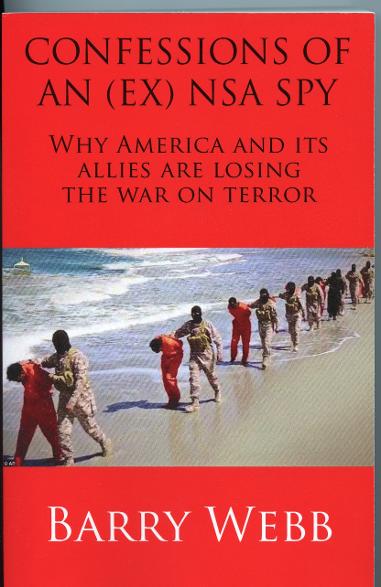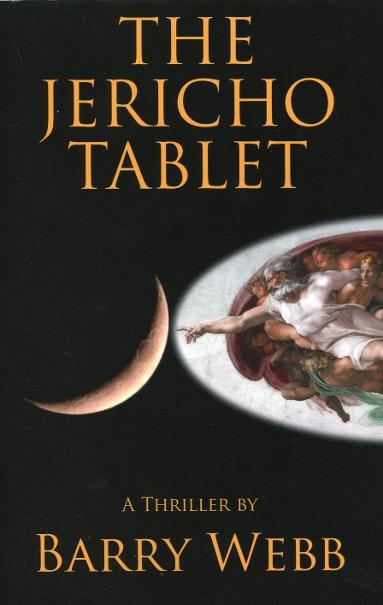The name “Jerusalem” is not mentioned even once in the Torah (the first five books of Moses). However, possible Biblical references to an early “Jerusalem” called “Salem” do occur in the book of Genesis (14:18-19) and Psalms (76:2).
OLD TESTAMENT REFERENCES
Psalms 76:1-2 reads as follows: “In Judah is God known: his name is great in Israel. In Salem also is his tabernacle, and his dwelling place in Zion.” This passage would seem to indicate that “Salem” was the site of Yahweh’s tabernacle, and also his dwelling place, i.e. the place where his temple was located. This passage, then, would seem to indicate that “Salem” was one and the same as “Jerusalem.” And, since the there was no “dwelling place,” or “tabernacle” to Yahweh in Jerusalem prior to the time of David and Solomon (late 11th century-early 10th century B.C.), and since that passage in Psalms was written many years after the time of Solomon, it would appear that the term “Salem” which is pre-Israelite, continued to be used (at least by some) in reference to “Jerusalem” long after the Israelite conquest of the city.
THE KING OF RIGHTEOUSNESS
The Genesis account mentions a Melchizedek (actually Malek Zadeq), king of Salem who was supposedly a priest of the most high God during the time of Abraham. (c. 2,000 B.C.). The account does not say which God, Malek Zadeq was priest of, but it most probably referred to the Canaanite “El,” since Yahweh was not known to Abraham and his followers (Exodus 6:3). Of importance here, though, is the fact that Abraham, his followers, and the surrounding communities all considered this Malek Zadeq to be an important person. Indeed, he has the authority to “bless” Abraham (Gen. 14:19-20), and that blessing, and greeting of Abraham also influenced the king of Sodom to make peace with Abraham. The name Malek Zadeq means “King of Righteousness,” so, this person was apparently both king and priest of a place called “Salem,” which in turn means “Peace,” and is an older Semitic equivalent of the later Hebrew “Shalom.”
We can deduce two things about the place called “Salem” from these verses in Genesis. One, by the early 2nd millennium B.C. it had already reached a certain degree of political importance and influence in the region. Two, it also seemed to have a strong religious significance in the region to the extent that a “priest” of that place was respected by his contemporaries in the surrounding communities.
EGYPTIAN AND AKKADIAN ACCOUNTS
Of interest to this discussion is the reference to a place called “Rushalimum” in two series of Egyptian “execration texts” dating from the 19th and 18 centuries B.C.
We also have a number of cuneiform tablets found in Egypt dating from the 17th or 15th centuries, depending upon which chronology one uses, that are from a king ‘Abdi Heba of “uru salem.”
“Uru Salem” and “Rushalimum” are one and the same, and the key to that deduction lies in the Akkadian language. “Salem,” or peace in proto-Semitic and Old Canaanite is “Shalam” in Akkadian. The Akkadian language had become the lingua Franca for diplomatic correspondence throughout the Ancient Near East by the beginning of the 2nd millennium B.C. The scribes of ‘Abdi Heba and other Canaanite rulers knew enough Akkadian to write professional level correspondences, however they occasionally mixed in a little of their own local language along with the Akkadian.
LINGUISTIC GYMNASTICS
The proper classical Akkadian for “Jerusalem” was Uru Shalimim, with the final “im” being the genitive case “mimation” ending (since this was an Idafa construction). “Uru” was originally the Sumerian word for “city,” indeed one of the earliest cities in Mesopotamia was called “Ur.” The Akkadians, in adopting the Sumerian cuneiform writing system to express their own language also adopted many Sumerian words in the process, and “Ur(u) meaning “city” was one of them. In later Hebrew that word came to be pronounced ‘Eir (ayin yod rosh). So, “Uru Shalimim” in Akkadian, meant “city of peace” and is the same as the Canaanite “uru salem” that we see in the Amarna letters from ‘Abdi Heba mentioned above.
The Egyptian “Rushalimum” from the earlier excretion texts was simply a corruption of the Akkadian “uru shalimim.”
JEWISH PRONUNCIATION CHANGES
At some point between the end of the Bronze Age (c. 1300 B.C.) and the Babylonian “captivity” (7th century B.C.) the Jews began to pronounce “uru shalim” as “yerushalim.” And that pronunciation continued to be used through at least the 1st century A.D. Coins produced by the Jewish “Zealots” rebelling against Rome at that time were inscribed with the words “Sheqel of Yisrael” on one side, and “yerushalim ha-Qodishah” (Jerusalem the Holy One) on the other side.
The pronunciation of “Yerushalem,” or “yerusalem,” must have still been in use at the time the King James Bible was being translated into English (early 17th century A.D.), with the only corruption being the change from “Y” to “J” (a defect peculiar to English).
The modern Hebrew pronunciation of “Yerushalayim” is a recent corruption.
THE ARABIC TERM
One other note of interest is the Modern Arabic term for “Jerusalem” “al-Quds” which they took from the last half of the early Medieval Jewish term “Yerushalim ha-Qodishah. “al” is the Arabic definite article corresponding to the Hebrew “ha” and the vowels “o” and “u” are interchangeable in the Semitic languages. Hebrew “sh” usually becomes “s” in Arabic and vice-versa. Arabic then just left off the feminine determinative “ah” at the end of the word and dropped the short helping vowel after the “d” giving us “al-quds” instead of the earlier “al-qudisah.”
And so, that is how we have ended up with “Jerusalem” in English, “Yerushalayim” in Modern Hebrew and “al-Quds” in modern Arabic—all for the same city called “uru salem” in ancient times.

What are the long-term, overarching historical laws and trends that tell us the West is doomed?
Why is "Climate Change" not a national security issue, but the hysteria over it is?
What intelligence failures, if any, led to 9/11, the Boston Marathon bombing, San Bernadino, and other terrorist acts on our soil?
Why did we turn Iraq over to the Iranians?
Why did we go into Iraq in the first place?
Did we create ISIS? If so, Why?
Why do virtually all Middle Easterners across the board think that the U.S. is a major sponsor of terrorism?
Is Islam truly a "religion of peace?"
Why does Washington exert such Herculean bipartisan efforts to misunderstand these issues?
What are the Islamic prophecies driving recruitment for groups like ISIS and al-Qaeda?
Why driving ISIS from the battlefields of the Middle East will not be the end of the war on terror, no matter what our government says.
All of these issues and much more are discussed in this, the only counter-terrorism book on the planet that pulls it all together and connects all the dots.
www.amazon.com and www.barnesandnoble.com
For more information visit www.nsaconfessions.com

BACK FLAP for "THE ALEPPO FILE"
Faced with cratering poll numbers, a U.S. president agrees to a plot having Islamic radicals kidnap an ambassador so he can "negotiate" his release in turn for the "Blind Shaykh," currently in prison for the 1993 World Trade Center bombing. The president hopes that the Blind Shaykh's return to Egypt will strengthen the hand of the Muslim Brotherhood to corral Islam's more radical terrorist groups and unite all Sunni Muslims with Turkey in a resurrected Ottoman Empire aimed at keeping the Russian bear caged. But when the kidnap operation falls apart and four Americans are killed at the U.S. consulate in Aleppo, the administration goes into full cover-up mode. Only undercover agent Matt Nolan knows the full truth of what happened in Aleppo--placing him number one on the Administration's enemies list. As Russia threatens war over the Ottoman Empire plot, Matt has to dodge numerous assassination attempts in his desperate effort to return to the U.S. to testify before Congress, put a stop to the Ottoman Empire plot, and defuse WWIII.
For more information, please visit the book's website at: www.thealeppofile.com
To purchase the trade paperback version please go to: www.amazon.com
Kindle and Nook versions are also available.
ALSO NOW AVAILABLE:

What if an ancient table was discovered that undermined the foundations of both Christianity and Islam while giving instructions for re-awakening an older god, a god who exacts frightful revenge while promising a utopia of eternal life, peace, and vast knowledge—in return for absolute devotion and loss of free will?
What if that “god” was an artifact buried just under the surface of the moon supposedly by an ancient space-faring race? What if the president of the United States had a Messiah complex and staged his own “assassination” and “resurrection” three days later in order to become the “son” of that new/old “god” on the moon?
Matt Nolan and his colleagues in the U.S. Intelligence Services have only a limited amount of time to uncover the secrets of the resurrected artifact and find a means for destroying it and corralling the president—before they themselves are destroyed.
Is it the rapture that Evangelicals have been praying for?
Is it the new heaven and the new earth prophesied in both the Bible and the Qur’an?
Or, is it the anti-Christ? The Beast of Revelations? The great blaspheme? The abomination that maketh desolate?
Or, is it something else even more sinister?
THE JERICHO TABLET serves up a captivating mixture of ancient Near Eastern history, religion, and linguistics to go along with its modern day spy craft, political intrigue and corruption, media collusion, and science—while entertaining the reader with a fast-paced plot.
For more information, please visit the book's website at: www.thejerichotablet.com
To purchase, please click on:
www.amazon.com / Books / The Jericho Tablet